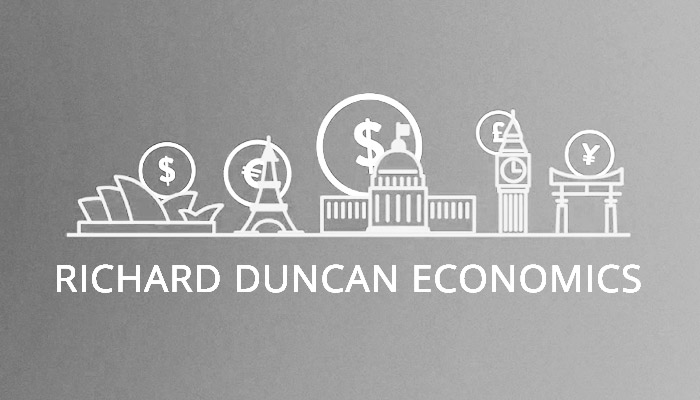Liquidity Gauge Warning: After mid-year, Look Out!

Posted April 25, 2015
Liquidity determines which way asset prices move. When there is excess liquidity, the price of stocks, bonds and property tends to rise. When liquidity is negative, the price of those assets tends to fall. After two years of excess liquidity – and rapidly appreciating asset prices – liquidity will turn negative in the second half of this year AND REMIAN NEGATIVE FOR THE NEXT FIVE YEARS!
This approaching liquidity drain is not only likely to cause a significant selloff in the financial markets, it is also likely to push the economy back into recession.
In the new Macro Watch video, uploaded today, we consider why liquidity matters and how to measure it using a Liquidity Gauge. I then update my projections for the Liquidity Gauge out to 2020, using two different sets of assumptions, the first based on the IMF’s forecasts for the US Current Account deficit, the second based on mine. Under both scenarios, liquidity will be negative every year.
Given this bleak outlook for liquidity, we’ll see that the only way stock prices could move higher is if interest rates move lower. The possibility that interest rates will fall significantly further can’t be ruled out, but if they do, it would most probably be as the result of the United States falling back into recession.
For investors, it is more important to understand liquidity than to understand the “economic fundamentals”. Watch this video and you will.
If you are a Macro Watch member, log in now and watch “The Liquidity Gauge Update”.
If you have not yet joined, click on the following link:
https://richardduncaneconomics.com/product/macro-watch/
For a 50% subscription discount worth US$250, hit the “Sign Up Now” tab and, when prompted, use the coupon code: gauge
You will find more than 15 hours of Macro Watch videos available to watch immediately. A new video will be added approximately every two weeks.

Richard,
I have been following your Macro Watch for awhile now and have read one of your books, The New Depression. My question has to do with the proposal that you make in your book and a number of your interviews, that the government should borrow more and invest those budget deficits into growth related projects (which by the way is also espoused by Martin Wolf). But if the government does increase deficits (borrow) AND the Fed does NOT begin QE4 (i.e. your comment – in effect, retire the government debt), will those deficits dry up liquidity, driving interest rates up through “crowding out”, and cause a severe impact on the market? Or do you think that somehow the new investment and subsequent growth will be sufficient to stimulate greater current account deficits?
Hi Richard, So the potential silver lining as far as asset prices go is that the US may re-commence QE ins some for or another later in 2015 to avoid a nrew recession. That one factor alone would change the current prognosis for liquidity drain on the US economy possibly lasting some 5 years or so as per your and the IMF’s projections. Me, I am betting on new stimulus. Sincerely, Jack.
Correction….that should read “in some form or another later….”
Jeronimo,
A combination of greater fiscal deficit spending (for investment in new industries and technologies) with more QE to finance it would be best. If the government borrowed a lot more, i.e. ran much larger budget deficits (without more QE), there would be a risk that interest rates would rise too much and that there would be a severe liquidity drain that would have a very negative impact on asset prices.
Jack,
Yes. That’s right. And I’m betting on more stimulus, too.
With June’s trade numbers increasing the way that they did, it would appear that 1st quarter GDP will be negative, our third since the Great Recession ended. We have never had three negative GDP’s, since we went to the quarterly GDP standard in 1947, no matter how far apart, without triggering a new recession.
With this time be different?